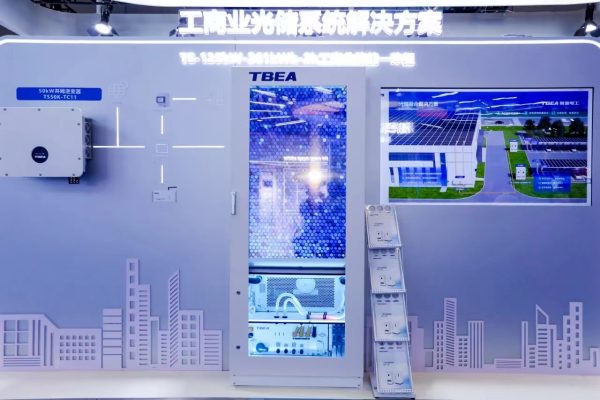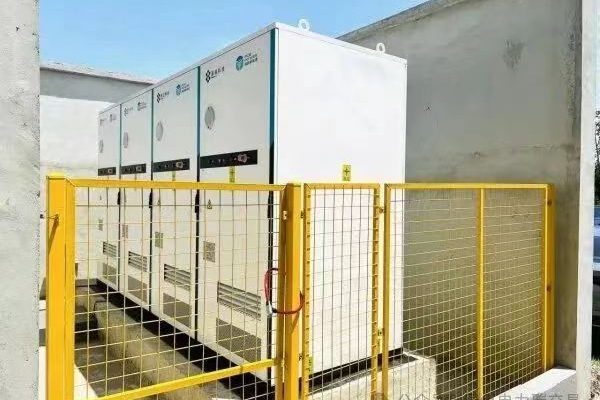As electric vehicle (EV) adoption accelerates worldwide, the demand for fast and reliable charging infrastructure is growing rapidly. However, EV charging stations present one key challenge — they draw high, variable power from the grid, often exceeding local transformer or grid capacity.
That’s where energy storage systems (ESS) come in.
By integrating battery storage with EV charging stations, operators can stabilize grid load, reduce energy costs, and provide a better charging experience — all while supporting renewable integration.
This article explains why and how to integrate energy storage into EV charging stations, including design strategies, benefits, and key technical considerations.
1. Why Combine Energy Storage and EV Charging?
1.1 The Problem: High Power Demand Peaks
EV fast chargers (DC) can draw 30–300 kW per vehicle.
When several vehicles charge simultaneously, grid demand spikes dramatically.
Example:
A 6-stall DC fast charging station (120 kW each) = 720 kW total load — often exceeding the grid connection limit of small substations.
1.2 The Solution: Energy Storage Integration
By installing an on-site battery system, the station can:
- Store energy during off-peak hours or from solar PV
- Discharge energy during high-demand periods
- Reduce grid connection size and demand charges
- Provide backup power during outages
💡 In short: Energy storage smooths the peaks, reduces costs, and enables sustainable EV charging expansion.
2. Typical System Architecture
A modern EV + Storage system typically includes:
- EV Chargers: AC (7–22 kW) or DC Fast Chargers (50–350 kW)
- Battery Energy Storage System (BESS): 50–1000 kWh capacity
- Hybrid Inverter / PCS (Power Conversion System)
- Energy Management System (EMS)
- Solar PV (optional)
- Grid Connection
[Grid] ↔ [Hybrid PCS] ↔ [Battery Pack]
↕
[EV Chargers]
↕
[EMS / Controller]
↕
[PV Array (Optional)]
The EMS coordinates power flow among these elements, ensuring the optimal combination of grid power, solar energy, and stored energy.
3. Integration Models
3.1 Grid-Connected with Peak Shaving
- The ESS charges during off-peak hours and discharges during high-demand times.
- The goal is to minimize grid impact and lower demand charges.
Advantages:
✅ Lower operational cost
✅ No off-grid complexity
✅ Fast ROI in areas with demand-based tariffs
Example:
A 300 kWh ESS can reduce grid draw by 100 kW during peak charging hours.
3.2 PV + Storage + EV (Renewable Charging Hub)
- On-site PV powers chargers and charges the battery during the day.
- The battery discharges to support evening EV charging.
Advantages:
✅ Enables green, zero-carbon charging
✅ Reduces grid dependency
✅ Qualifies for renewable incentives
Example:
A 100 kW PV array + 200 kWh battery can power ~40 EVs daily with 80% renewable contribution.
3.3 Off-Grid or Remote Charging
- Used where the grid is weak or unavailable (e.g., highways, islands).
- ESS and PV provide the full energy supply.
Advantages:
✅ Independent operation
✅ Supports rural electrification
✅ Portable or containerized design possible
Disadvantages:
⚠️ High CAPEX
⚠️ Requires larger batteries and backup genset for reliability
4. Sizing the Battery System
Battery sizing depends on charger power, station usage pattern, and desired autonomy.
| Parameter | Typical Value | Notes |
|---|---|---|
| Station Power | 150–1000 kW | Total of all chargers |
| Battery Capacity | 100–2000 kWh | 15–30 minutes of full-power support |
| Battery Type | LFP preferred | Long cycle life and high safety |
| PCS Rating | Equal to station’s total kW | Bidirectional operation |
| Depth of Discharge | 80–90% | Balances performance and life |
⚙️ Example Calculation:
Station: 300 kW fast charger cluster
Desired discharge support: 1 hour
→ Battery = 300 kW × 1 h = 300 kWh nominal capacity
5. Benefits of ESS-Integrated EV Charging
5.1 Grid Load Reduction
- Smooths sudden demand spikes from fast chargers
- Allows smaller grid connection sizes
- Reduces the need for expensive transformer upgrades
5.2 Cost Savings
- Avoids high demand charges during peak hours
- Stores energy when electricity prices are low
- Enables energy arbitrage in TOU regions
5.3 Renewable Utilization
- Stores excess solar power for later EV charging
- Reduces CO₂ emissions and operational costs
5.4 Backup Power
- Keeps chargers running during grid outages
- Provides additional resilience for critical EV infrastructure
5.5 Faster Deployment
- ESS can act as a power buffer, reducing dependence on utility upgrades
- Ideal for new charging sites with limited grid access
6. Communication and EMS Integration
A smart Energy Management System (EMS) ensures seamless coordination between:
- EV Chargers
- Battery System (BMS)
- Hybrid Inverter / PCS
- Utility Grid or PV System
Common Communication Protocols:
- MODBUS TCP / RTU for inverter and battery integration
- OCPP (Open Charge Point Protocol) for charger network management
- CAN Bus for internal battery communication
- Ethernet or 4G/5G for cloud monitoring
The EMS performs real-time power scheduling, deciding whether to:
- Draw from the grid
- Charge/discharge the battery
- Limit charger output during peak times
🧠 Smart EMS = Optimized economics + extended battery life + improved station uptime.
7. Real-World Use Cases
Case 1: Urban Fast-Charging Hub (Europe)
- 6 × 150 kW chargers
- 500 kWh LFP battery, 400 kW PCS
- Peak grid draw reduced by 40%
- Payback period: ~5 years
Case 2: Solar EV Station (Australia)
- 200 kW PV + 300 kWh BESS
- 90% solar charging coverage during daylight hours
- Achieved zero-carbon charging with minimal grid reliance
Case 3: Remote Charging Container (Africa)
- 50 kW PV + 200 kWh battery + 60 kW PCS
- Off-grid EV station for rural highway corridor
- Charges ~20 EVs daily
8. Key Design Considerations
- Battery Chemistry:
Use LiFePO₄ (LFP) for safety, long life, and thermal stability. - PCS Selection:
Choose bidirectional hybrid PCS (DC coupling supported) for flexibility. - Thermal Management:
EV chargers and batteries generate significant heat — use active cooling systems. - Safety Standards:
Design according to UL 9540, IEC 62619, and NFPA 855 for ESS and EV applications. - Scalability:
Adopt modular containerized ESS to expand capacity easily as charging demand grows. - EMS Flexibility:
Ensure EMS supports dynamic load control and OCPP compatibility for networked operation.
9. Future Trends in ESS + EV Integration
- V2G (Vehicle-to-Grid):
EVs themselves will act as mobile storage assets, feeding energy back to the grid. - DC-Coupled Charging Hubs:
Shared DC bus links between PV, battery, and EV chargers reduce conversion losses. - AI-Based Energy Management:
Predictive algorithms optimize when to charge/discharge based on traffic and weather data. - Hybrid Infrastructure Models:
Combining ESS, hydrogen, and renewable microgrids for ultimate resilience. - Policy Incentives:
Governments increasingly support ESS-based EV charging for grid stability and renewable integration.
10. Final Thoughts
Integrating energy storage into EV charging stations is not just a technical upgrade — it’s the foundation for a smarter, cleaner, and more resilient EV ecosystem.
✅ Key Takeaways:
- ESS smooths grid peaks and lowers operational costs.
- Hybrid systems with PV + Storage + EV enable renewable-powered mobility.
- Smart EMS coordination is essential for safety and efficiency.
- Modular, scalable ESS designs ensure long-term adaptability.
As EV adoption surges, battery-backed charging stations will become the new standard — balancing sustainability, performance, and profitability for the next generation of mobility infrastructure.









